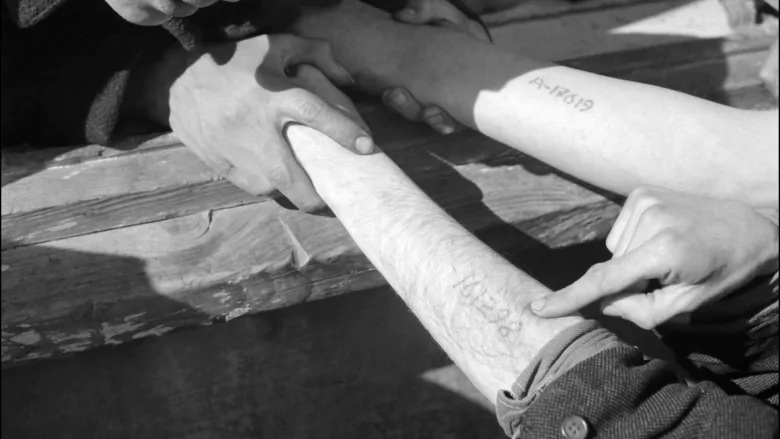Jewish man forced to tattoo other prisoners kept story private for 6 decades
The first time Lale Sokolov met Gita Furman, he pushed a needle into her flesh to tattoo her arm with a five-digit number.
It was July 1942. Both Sokolov and Furman were prisoners in Auschwitz.
As the camp's tetovierer, he had tattooed countless other prisoners, but this time was different. This time, Sokolov fell in love.
"I tattooed her number on her left hand, and she tattooed her number in my heart," he told author Heather Morris, years later.
Morris met Sokolov in 2003. He was in his late 80s, and wanted someone to tell a story he had kept private for 60 years.
"How quickly can you write?" he asked when they met. "I need you to work quickly. I don't have much time."
They would meet two to three times a week for the next three years. "The story took three years to untangle .. to earn his trust," Morris recalled. By the time Sokolov died in 2006 at the age of 90, they had become close friends.
Morris released The Tattooist of Auschwitz, a novel based on his true story, in January.
She spoke to The Current's Anna Maria Tremonti about the true story of what happened to Sokolov in Auschwitz, the love that helped him survive, and why he waited a lifetime to tell their story.
A tattoo meant a chance 'to see the sun come up'
Arriving in Auschwitz, people were split into two lines: those fit to work, and those to be immediately killed.
The workers were sent to Sokolov, clutching a scrap of paper with their camp serial number. He would scratch the numbers into their arm with a needle, rubbing green ink in the bleeding wound.
He knew that anyone "who didn't come to get tattooed ... didn't get to see the sun come up the next day," Morris said.
That's how he rationalized it, she said. If Sokolov had refused, "he wouldn't have seen the sun come up."
He had suffered the same ordeal upon his arrival at Auschwitz, in April 1942. The Nazis had ordered all of Slovakia's Jewish families to surrender one male to work in the war effort. Sokolov's father was elderly and his brother had children, so he volunteered.
His number, 32407, was tattooed by a man named Pepan, who later made Sokolov his assistant. When Pepan disappeared — presumed murdered — Sokolov became the camp's tetovierer.
The job gave him some protection, but Sokolov knew he lived in the shadow of death, just like any other prisoner.
Josef Mengele, the Nazi infamous for human experimentation, would stalk the lines of new arrivals, looking for subjects. He often threatened to take Sokolov, but the camp commandant wouldn't allow it.
"Nobody in Auschwitz or Birkenau put the fear of God in [Sokolov] quite like Mengele did," Morris said. "He was the one person he truly feared."
One day, Mengele chose the tattooist's assistant, a man named Leon, for his experiments.
"He didn't kill him," Morris said, "but he castrated him."
Accusations of collaboration
When Morris met Sokolov to discuss telling his story, he had one requirement: the writer could not be Jewish.
He feared accusations of collaboration, and worried a Jewish writer would have preconceptions about what was right and wrong, Morris said.
He asked what she knew about the Holocaust.
"My small-town New Zealand education really hadn't given me much, and so to him that made me perfect."
Morris thinks his fears were unfounded.
"[I've] spoken at synagogues from London to Sydney and beyond, and nobody's even hinted that he should have thought that way."
Furman died in 2003, aged 78. Sokolov decided it was time to tell their story, hoping his testimony would stop history repeating.
"He would say to me: 'Just do one thing good every day, if you can,'" Morris recalled.
In turn, she often asked what his good deed of the day was.
"I take the doggies for a walk," he once told her, "and I find a stranger and I smile at them. And then I feel better.'"

